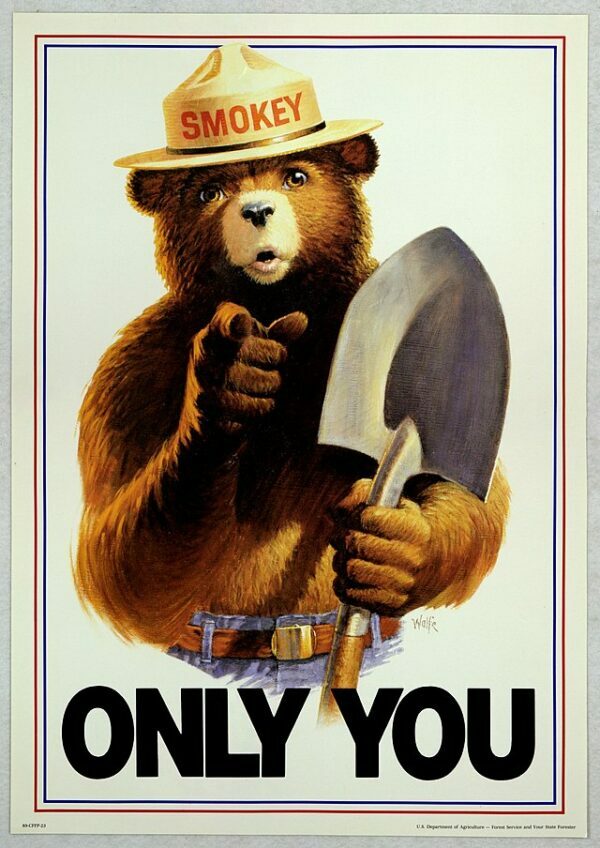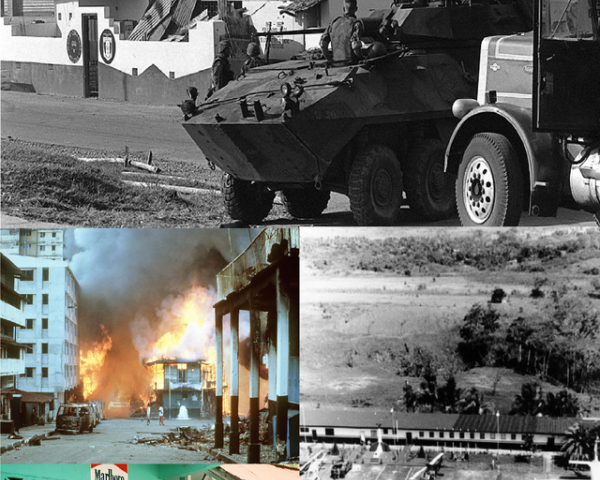Smokey Bear, commonly known as Smokey the Bear, stands as an enduring symbol of wildfire prevention in the United States. With his iconic slogan, “Only YOU Can Prevent Forest Fires,” Smokey has become a cultural figure representing the nation’s efforts to protect forests from the devastating effects of human-caused fires. The origins of Smokey Bear trace back to the 1940s, a period marked by heightened awareness of forest conservation and the necessity to educate the public on the dangers of carelessly starting wildfires.
The creation of Smokey Bear was a response to a growing concern over forest fires during World War II. The war significantly increased the demand for lumber, leading to the over-exploitation of forest resources. This period also saw the mobilization of the American public to support the war effort through various means, including conservation efforts. In 1942, the Japanese launched balloon bombs intended to cause wildfires on the West Coast, highlighting the vulnerability of American forests to both natural and human-made fires. The incident underscored the importance of forest fire prevention as a matter of national security.
The idea of a national wildfire prevention campaign was born out of a collaboration between the U.S. Forest Service and the Wartime Advertising Council. Initially, the campaign used Disney’s popular character, Bambi, in 1944 to spread the message. However, the rights to Bambi were limited, and the need for a long-term mascot became evident. In response, Smokey Bear was created on August 9, 1944, with his first poster depicting him pouring a bucket of water on a campfire. The original poster featured the now-famous slogan, though it has since been slightly altered to “Only YOU Can Prevent Wildfires” to reflect a broader scope of fire prevention.
Smokey Bear’s character quickly gained popularity, becoming an effective tool for educating the public about the importance of fire safety. His image, a friendly yet authoritative bear dressed in a ranger hat and jeans, resonated with Americans. The character’s appeal was bolstered by the simplicity and directness of his message, making it accessible to people of all ages. Over the years, Smokey Bear has appeared in various forms of media, from posters and radio announcements to television commercials and even comic books. His message has been consistently aimed at encouraging responsible behavior in the outdoors, particularly regarding fire safety.
In an interesting twist of fate, a real-life bear cub named Smokey was rescued from a wildfire in New Mexico’s Capitan Mountains in 1950. The cub, which had climbed a tree to escape the flames, was found with severe burns on its paws and hind legs. This bear, later named Smokey, was nursed back to health and became a living symbol of the campaign. The real Smokey Bear became a national sensation, living in the National Zoo in Washington, D.C., until his death in 1976. His remains were returned to Capitan, where they were buried at the Smokey Bear Historical Park, further cementing his legacy.
Smokey Bear’s impact over the decades has been profound. The campaign has been credited with reducing the number of acres lost to wildfires, thanks in part to the public’s increased awareness of fire prevention practices. Smokey’s image and message continue to evolve, addressing contemporary issues such as climate change and its role in exacerbating wildfire risks. Despite changes in the campaign’s focus, Smokey Bear remains a beloved and enduring figure, reminding generations of Americans that they hold the power to protect the nation’s forests from the threat of wildfires.






